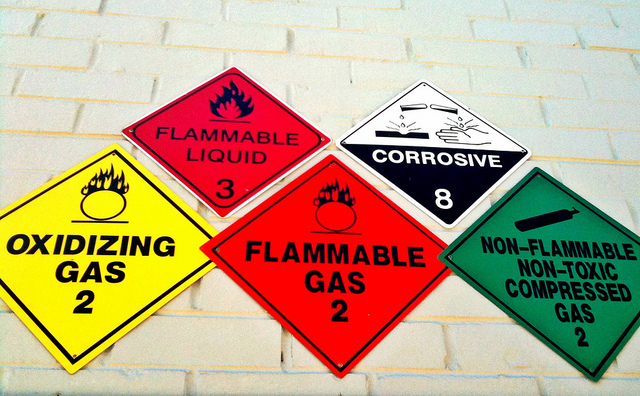The Occupational Safety and Health Administration (OSHA) is authorized to inspect regulated workplaces, although it generally inspects only workplaces deemed highly hazardous (which typically are targeted sector-wide by OSHA National Emphasis Programs (NEPs) or their regional or state equivalents), or those subject response to complaints or reported incidents of injury or illness (I&I). On April 1, OSHA revised provisions in its inspection standard (29 CFR 1903) clarifying which “employee representatives” can accompany an inspector during a walk-around; the revisions are to become effective on May 31. This revision reflects part of broader inspection revisions proposed on August 30, 2023 (which I wrote about HERE). The rest of this note discusses the change to walk-around provisions.
Read MoreAudit, Compliance and Risk Blog
Tags: Health & Safety, OSHA, Safety and Health at Work, workplace safety
Biden Administration proposes limited increases in OSHA budget
Posted by Jon Elliott on Mon, Apr 08, 2024
On March 11, the Biden Administration issued its budget proposal for federal Fiscal Year (FY) 2025 (October 1, 2024 through September 30, 2025). The administration proposes a $655.5 million budget for the Occupational Safety and Health Administration (OSHA), a 3.7% ($32.1 million) increase above OSHA’s adopted 2023 budget of $632.4 million (the Administration had proposed $701 million). OSHA is presently operating under the latest FY 2024 Continuing Budget Resolution (since no budget has been adopted for FY 2024 (I wrote about the Administration’s FY 2024 proposal HERE). Even if an FY 2025 budget is enacted, political differences make significant reductions from this proposal likely, but it’s worth reviewing the proposal as a reflection of the Administration’s ongoing environmental priorities. The remainder of this note summarizes the Biden Administration proposal.
Read MoreTags: Health & Safety, OSHA, Safety and Health at Work, Cal/OSHA, FTE, Joe Biden, USA
This is the time of year when employers in many parts of the continent should be making focused effort to protect workers against winter weather. Occupational safety and health regulators include environmental and ambient hazards among those that employers must consider as part of their “general duty” to protect workers against recognized hazards. Requirements cover potential harm from extreme temperatures including cold, as well as slippery surfaces and other hazards from frozen and melting snow or other precipitation.
Agency regulations cover many specified types of situations, and guidelines are available for more. For example, the U.S. Occupational Safety and Health (OSHA) is drawing attention to its “Winter Weather” webpage as a source of information. The rest of this note summarizes information from OSHA’s webpage and those of other occupational safety agencies.
Read MoreTags: Health & Safety, OSHA, workplace safety, Winter, Weather
OSHA issues new Process Safety Management Standard enforcement guidance
Posted by Jon Elliott on Fri, Feb 09, 2024
The Occupational Safety and Health Administration’s (OSHA’s) Standard for Process Safety Management of Highly Hazardous Chemicals (usually referred to as “PSM”) requires extensive risk assessments and reduction efforts by facilities where a significant incident involving these chemicals might have catastrophic consequences. OSHA adopted PSM in 1992, and has made only minor technical revisions in the ensuing three decades. OSHA has also issued enforcement guidance to its inspectors, which it had not revised since 2012. However, in December 2023 OSHA issued an extensive new PSM enforcement policy, most of which is formatted in a total of 192 Questions and Responses designed to guide enforcement – and compliance that can obviate enforcement. The remainder of this note provides a very brief summary of the 120 page Enforcement Policy document.
Read MoreTags: Health & Safety, OSHA, Safety and Health at Work, workplace safety, chemical safety, PSM
On December 21`, 2023, the Occupational Safety and Health Administration (OSHA) announced a notice of proposed rulemaking (NPRM) to develop an Emergency Response Standard that will update, expand and supersede OSHA’s existing Fire Brigades Standard. The new standard will extend detailed OSHA protections to additional emergency responders, including not just firefighters but also emergency medical service providers and technical search and rescue workers. The rest of this note describes these proposed changes.
Read More
Tags: Health & Safety, OSHA, Fire Prevention, Fire Safety, NPRM
On November 22, the Occupational Safety and Health Administration (OSHA) issued a Safety and Health information Bulletin (SHIB) discussing “safety helmets” as evolved alternatives to traditional hard hats, and offering recommendations for situations where employers should switch. On December 11 the agency announced that it’s following its own advice and replacing its own employees/inspectors hard hats with safety helmets. The rest of this note discusses OSHA provisions for personal protective equipment (PPE) providing head protection, and the rationale and examples of the benefits of upgraded headgear.
Read MoreTags: Health & Safety, OSHA, Safety and Health at Work, workplace safety
The Occupational Safety and Health Administration (OSHA) Region 3 (covering Delaware, Pennsylvania, West Virginia, and the District of Columbia) has renewed a Regional Emphasis Program under which it focuses inspection resources on “High Level Noise.” This announcement provides a useful reminder to employers throughout the US to evaluate occupational noise and the risks of employees’ hearing loss. The remainder of this note summarizes OSHA’s Occupational Noise Standard for General industry (separate requirements cover construction).
Read MoreTags: OSHA, workplace safety, PPE, PEL
OSHA reminds employers about duty to keep young workers safe
Posted by Jon Elliott on Tue, Dec 19, 2023
The Occupational Safety and Health Administration (OSHA) provides a “Young Workers - You have rights!” webpage on its website, compiling regulatory and practical information for employers and workers. As we approach the annual spike in youth employment during the end-of-year Holidays, this provides a timely reminder to focus on the needs and rights of young people in workplaces. The webpage targets information as follows:
- Young Workers
- Employers
- Parents and Educators
- Real Stories
- Hazards
- Resources
The remainder of this note summarizes these materials, focusing on information useful to employers.
Read MoreTags: Health & Safety, OSHA, Safety and Health at Work, workplace safety
Deadlocked Supreme Court of Canada allows restriction of owner-employer contracting out OHS responsibilities to contractors
Posted by Jon Elliott on Thu, Nov 30, 2023
Throughout North America, Canadian occupational health and safety (OHS) agencies and US occupational safety and health (OSH) agencies administer and enforce worker protection laws. These laws require extensive employer efforts to protect employees – although in some situations it’s unclear which employer(s) are responsible for which workers. These complex situations include construction sites where one or more landowners or property occupiers hire one or more contractors to performer work. In November 2023 the Supreme Court of Canada deadlocked four-to-three-to-one in a case involving liability for a municipal “owner” that had attempted to contract all responsibilities (and potential liabilities) to the contractor (“constructor”) hired to repair a municipal water main, after a worksite death. (R. v. Greater Sudbury (City)) Because the Supreme Court deadlocked, the Ontario Court of Appeal decision finding the city liable becomes the law of the case, overturning many years of practice in which owners contracted-out OHS responsibilities to their constructors.
Read MoreTags: OSHA, Supreme Court, workplace safety, Canada, Ontario Court, Ontario
The Occupational Safety and Health Administration (OSHA) is authorized to inspect regulated workplaces, although it generally limits its inspections to workplaces deemed highly hazardous (often targeted sector-wide through National Emphasis Programs (NEPs) or their regional or state equivalents), or in response to complaints or reported incidents of injury or illness (I&I). OSHA regulations include inspection procedures (29 CFR 1903), which OSHA proposed on August 30, 2023 to clarify and revise slightly. The rest of this note summarizes OSHA’s procedures briefly, including the proposed changes.
Read MoreTags: Employer Best Practices, OSHA, Employee Rights, Employment, workplace safety








